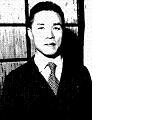
|
|
|
What is Macrobiotics?
The following is excerpted from Pocket Guide to Macrobiotics by Carl Ferré:
Macrobiotics is the practical application of the natural laws of change. The term comes from the Greek; "macro" means great, and "bios" means life. It is a tool that allows one to learn to live within the natural order of life, the constantly changing nature of all things.
Macrobiotics as it is known today is the result of the tireless work and vision of George Ohsawa (1893-1966).... While macrobiotic principles can be applied to all areas of life,... the macrobiotic approach to diet emphasizes whole grains and fresh vegetables, and for the most part avoids meat, dairy foods, and processed foods. The goal is to provide the body with essential nutrients so that it can function efficiently without loading it with toxins or excesses that must be eliminated or stored. And since the body is always adjusting to changes in the environment and to aging, its needs will always change as well. The idea is to continually balance the effect of foods eaten and other influences on the body, largely through diet, and to adjust to changes in a controlled and peaceful manner.
A basic tenet of macrobiotic thinking is that all things--our bodies, foods, and everything else--are composed of yin and yang energies. Yin energies are outward moving, yang energies are inward. Every thing has both yin and yang energies, but with either yin or yang in excess. Most of the foods that make up the standard American diet have very strong yin or yang characters, and also tend to be acid-forming. In contrast macrobiotic practice emphasizes the two food groups--grains and vegetables--that have the least pronounced yin and yang qualities, making it easier to achieve a more balanced condition within the natural order of life. Living within the natural order means eating only what is necessary for one's condition and desires, and learning to adjust in a peaceful way to life's changes. Learning the effects of different foods allows one to consciously counteract other influences and maintain a healthy dynamically-balanced state. The resulting freedom from fear and sense of control are two of the most important benefits of a macrobiotic practice.
The conventional nutritional approach holds that each individual needs certain amounts of proteins, fats, carbohydrates, vitamins, and minerals each day, based on a statistical average of everybody's needs. This makes the recommended daily allowances easy to comprehend, but does not allow for the uniqueness of each individual's changing needs. It eventually leads to stagnant, unfree thinking. The macrobiotic approach maintains that what works for one person will not necessarily work for another, and that what works one day may not work the next. Therefore, the macrobiotic approach amounts to determining the foods that are best suited to each person based on her or his current condition and what she or he wants to become. In other words, a macrobiotic approach requires a change in thinking from a static view of life to a dynamic and flexible one. This leads to real freedom. The first and most important step is to change from a diet based on meat and sugar to one based on grains and vegetables.
Very few people can make such a radical shift overnight. Instead, most people learn macrobiotics in stages... To order this or other books on macrobiotics, call the George Ohsawa Macrobiotic Foundation, (800) 232-2372 or (530) 566-9765, www.gomf.macrobiotic.net. |
|